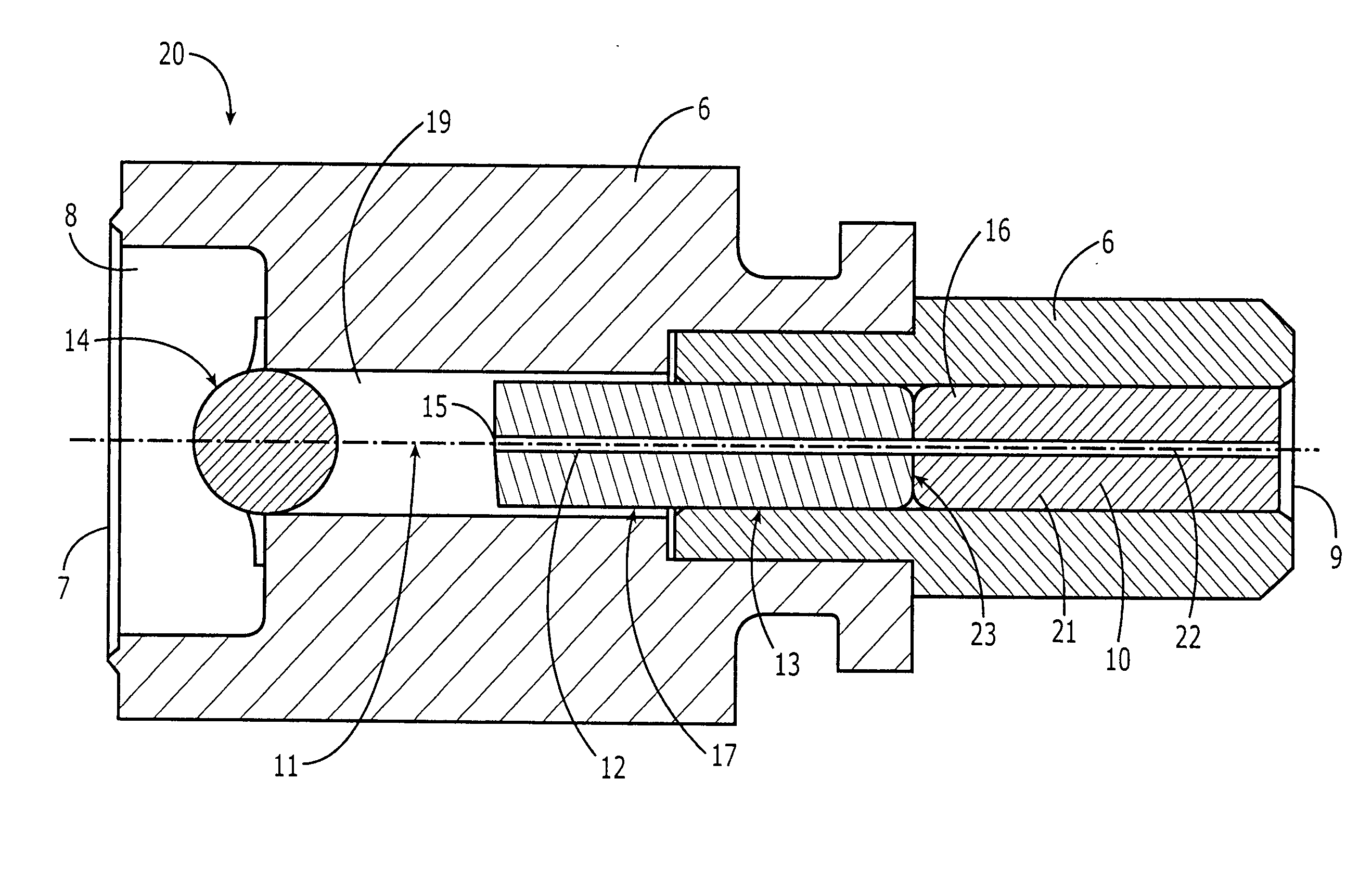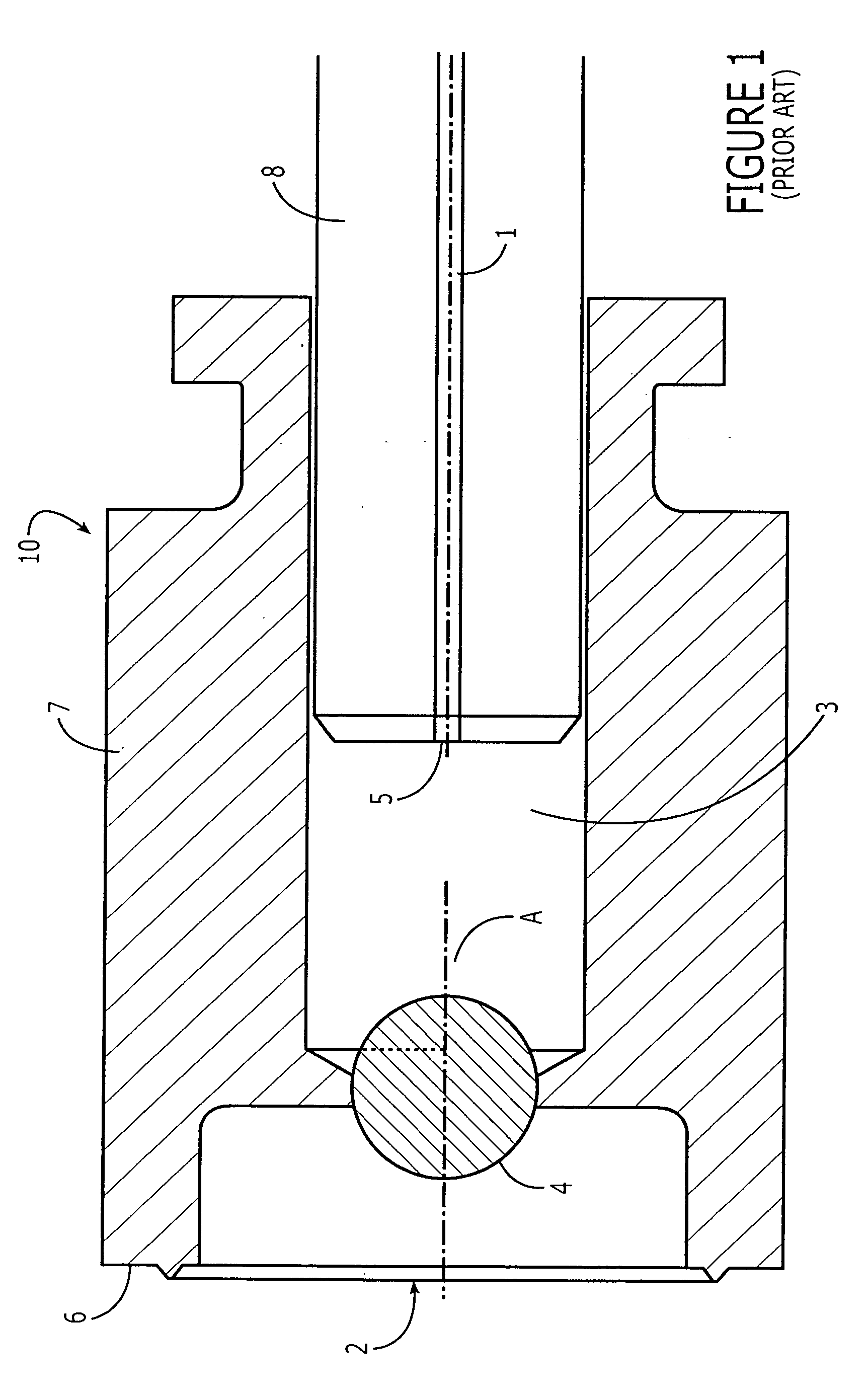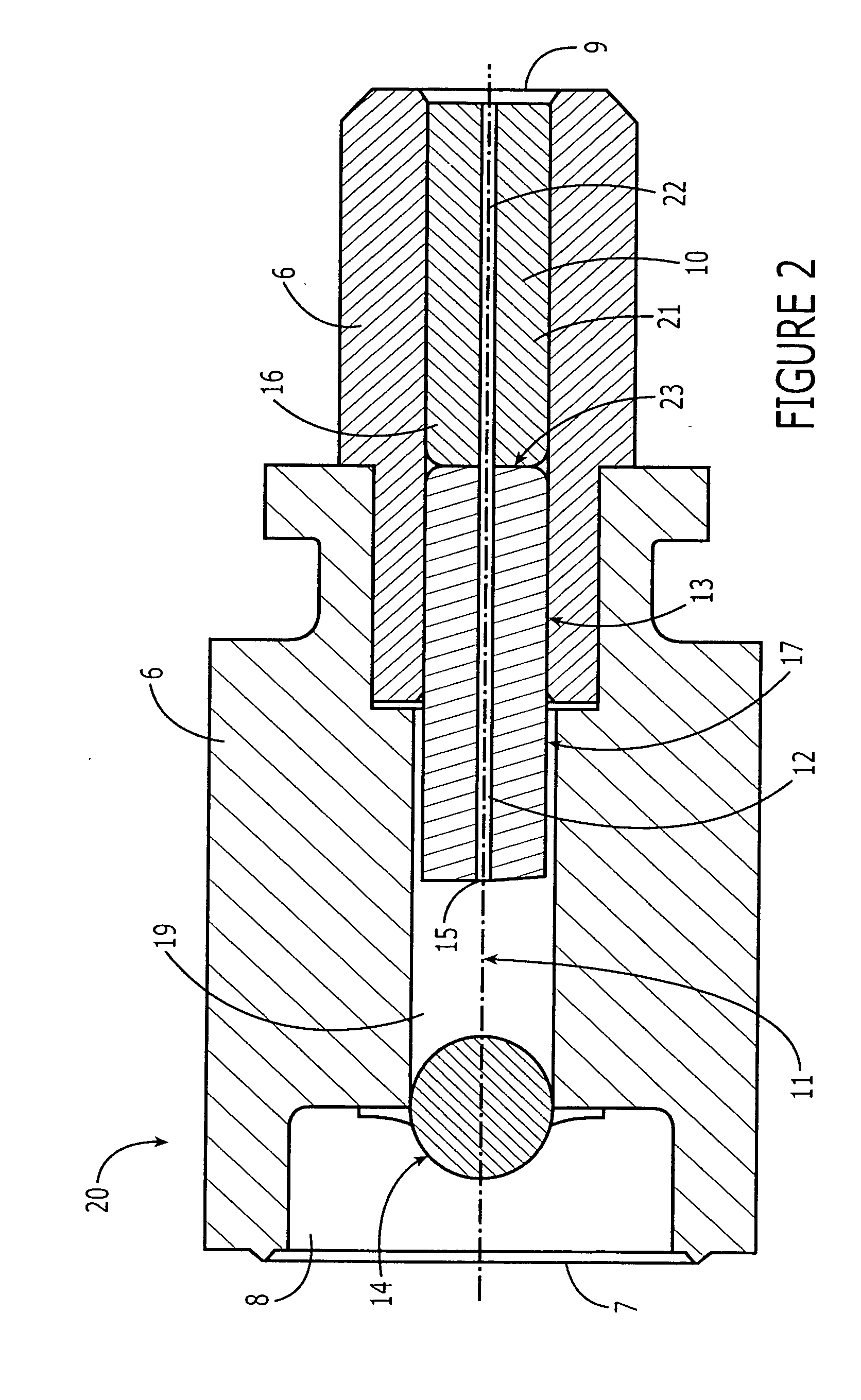Low reflectance optical coupling
a low reflectance, optical coupling technology, applied in the field of optical packages, can solve the problems of not being able to detect the characteristically higher attenuation loss of multimode fibers over single-mode fibers, and the unlikely optical coupling of reflected light back into the single-mode fiber, so as to improve the air gap optical coupling and reduce the effect of reflective loss
- Summary
- Abstract
- Description
- Claims
- Application Information
AI Technical Summary
Benefits of technology
Problems solved by technology
Method used
Image
Examples
Embodiment Construction
[0020] Referring to FIGS. 2-5, an optical coupling of the present invention is shown. For illustrative purposes, an optical connector interface (OCI) 20 will be considered herein specifically. It should be understood, however, that the present invention is not limited to an OCI, but can be practiced with any optical package involving a single mode fiber with a fiber / air interface.
[0021] The OCI 20 comprises a housing 6 having an optical axis 11, a first end 7 with a corresponding first cavity 8, and a second end 9 with a corresponding second cavity 10. The housing may be integrally molded or it may be an assembly of discrete components. The first cavity 8 of the housing is designed to receive an optical component, which, in this embodiment, is a ball lens 14, and that the second cavity 10 is designed to receive a single mode fiber 22, which, in this embodiment, is contained in a ferrule 21. The ferrule 21 holds the fiber 22 such that it is aligned along the housing's optical axis 1...
PUM
 Login to View More
Login to View More Abstract
Description
Claims
Application Information
 Login to View More
Login to View More - R&D
- Intellectual Property
- Life Sciences
- Materials
- Tech Scout
- Unparalleled Data Quality
- Higher Quality Content
- 60% Fewer Hallucinations
Browse by: Latest US Patents, China's latest patents, Technical Efficacy Thesaurus, Application Domain, Technology Topic, Popular Technical Reports.
© 2025 PatSnap. All rights reserved.Legal|Privacy policy|Modern Slavery Act Transparency Statement|Sitemap|About US| Contact US: help@patsnap.com



